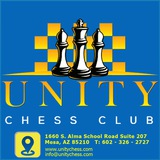For the exchange, White has three pawns, but what is even more important, he retains the initiative.
In the game, White played 29.Qg3, and after 29...Qd4 Black obtained definite counterplay, connected with the prospects of the advance ...a5-a4-a3. With the help of some further inaccuracies by White, Black eventually drew.
After 29...Rxh4 30.Qg3 Rh8 31.Qxe5, White completely dominates in the centre, whilst his king finds a good retreat on a2.
Black will inevitably come under attack along the open queenside lines, whilst White’s king is solidly defended.
Unity Chess Club
Carlos Torre Repetto Emanuel Lasker Moscow 1925 White to move
White exploits the weakness of g7 with a striking combination:
25.Bf6! Qxh5 26.Rxg7+ Kh8 27.Rxf7+ Kg8 28.Rg7+ Kh8 29.Rxb7+ Kg8 30.Rg7+ Kh8 31.Rg5+ Kh7 32.Rxh5
The rook has taken the greater part of the black army. Realising the material advantage is elementary.
32...Kg6 33.Rh3 Kxf6 34.Rxh6+ Kg5 35.Rh3 Reb8 36.Rg3+ Kf6 37.Rf3+ Kg6 38.a3 a5 39.bxa5 Rxa5 40.Nc4 Rd5 41.Rf4 Nd7 42.Rxe6+ Kg5 43.g3
Unity Chess Club
Tamaz Gelashvili 2535 Rustam Kasimdzhanov 2652 Deizisau 2004 White to move What do you think of 32.Bxd6?
In all probability in time-trouble, White missed that his queen still had a chance to hide from attack:
Allowing a seesaw, a serious mistake.
White could retain an obvious advantage with the brave 32.Qa7! Bxg2 33.Qxb6 Bxf1 (33...Bb7 34.a3 Nd5 (34...Ne4 35.Nh2!±) 35.Qb3±) 34.Kxf1 Bxg3 35.Qxf6 Bxh4 36.Qc6 Rd2 37.Rc2±.
White could retain an obvious advantage with the brave 32.Qa7! Bxg2 33.Qxb6 Bxf1 (33...Bb7 34.a3 Nd5 (34...Ne4 35.Nh2!±) 35.Qb3±) 34.Kxf1 Bxg3 35.Qxf6 Bxh4 36.Qc6 Rd2 37.Rc2±.
32.Bxd6? Rxg2+ 33.Kh1 Rxf2+ 34.Kg1 Rg2+ 35.Kh1 Rxb2+ 36.Kg1 Rg2+ 37.Kh1 Rxa2+ 38.Kg1 Rg2+ 39.Kh1 Rf2+ 40.Kg1 Rg2+ 41.Kh1
Black has eliminated all the white pawns on the second rank with his seesaw, and now it is time to take something bigger!
